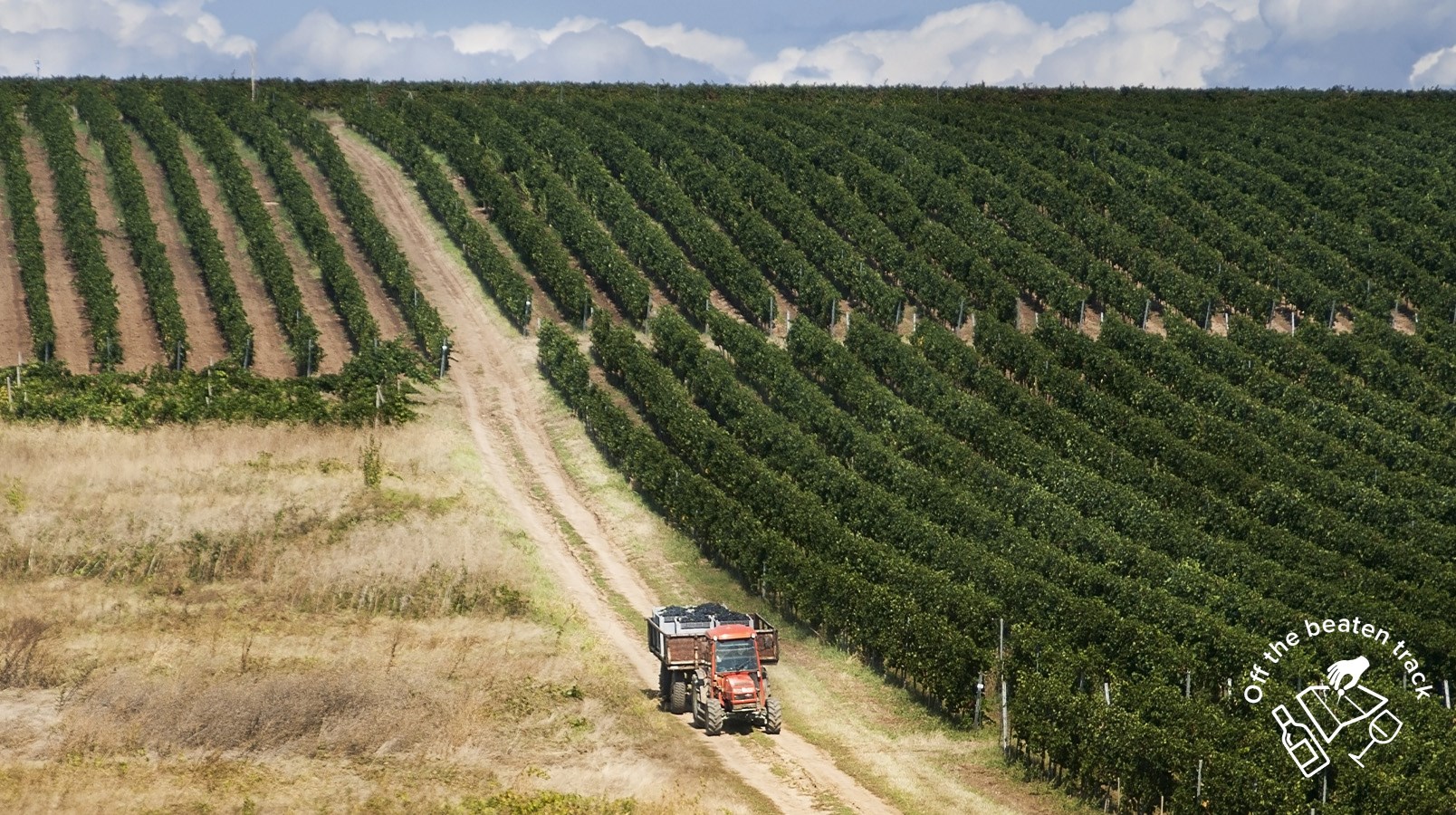Romania has one of the oldest wine-producing cultures in Europe, it was shaped by the Romans, and then the monasteries and subsequently influenced by the French. Today, the Romanian wine industry has a clear focus on quality and integration with European standards. This article investigates the history, scale, regions, geography, winemaking techniques, and the future of the Romanian wine industry.
A brief history of Romanian wine culture
Wine production in the region that is now modern Romania dates back to ancient times when the Greeks brought grapevines to the country via the Black Sea between 600-500 BC. These vineyards were located in present-day Dobrogea and were used by the Romans during their occupation.
If you are ready to take your wine knowledge to the next level, the Level 3 Award in Wines teaches you about 63 key wine regions in 15 different countries.
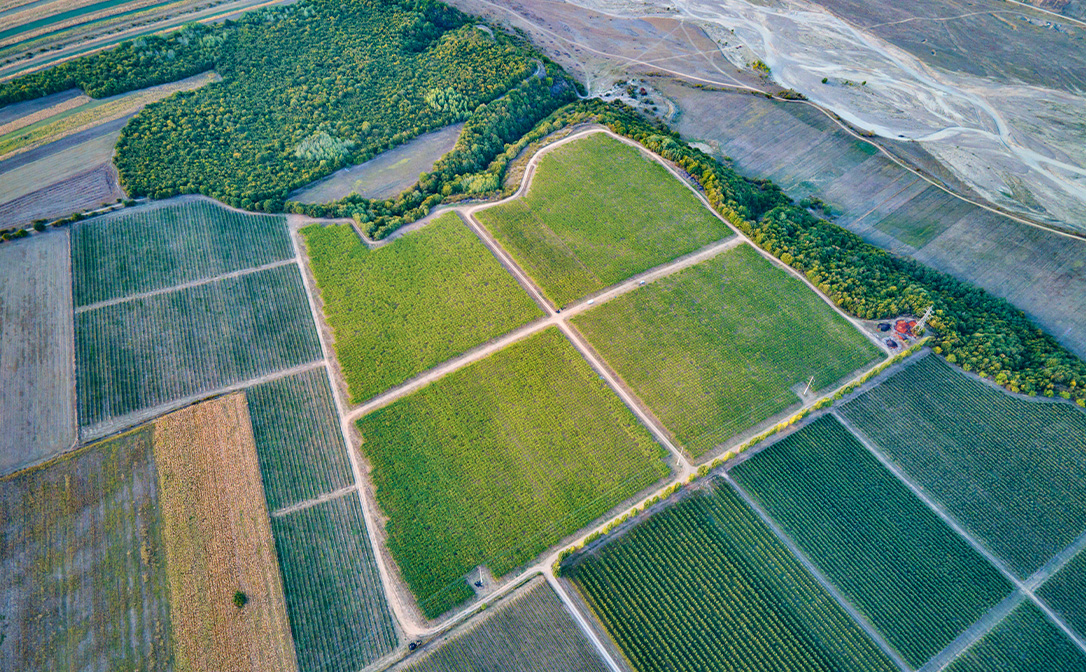
Vineyards in present-day Dobrogea, Romania
Monasteries contributed to the development of vines and wines in the Valea Călugărească (N/A in Deaul Mare), Drăgăşani region, or Transylvania. However, as with much of Europe, the phylloxera blight took hold in 1884 and wiped out many vineyards within the country.
Phylloxera is an insect that is native to North America against which most European vines (V.vinifera) are unable to defend themselves. Consequently, it caused extensive destruction to the vineyards of Europe when it spread in the nineteenth century. American vine species are resistant to Phylloxera, hence why American rootstocks are used to combat this disease.
French viticulturists helped Romania to overcome the crisis by introducing rootstocks. In the early twentieth century, viticultural regulations were implemented, the first designations of origin were formed and subsequently the first wine maps were created.
Under the 1944-1989 communist rule, wine production became highly industrialised to maximise productivity. Many indigenous varieties diminished, while other types of grape varieties were created through crossings for more consistent production resulting in higher yields.
After 1990, progress occurred at a slower pace than expected due to the nation adapting to the new market economic system and creating a new legal framework. Privatisation was boosted through new laws and a select few historic estates. Foreign investment and EU funding has, more recently, contributed to reconstructing the country’s wine heritage.
Wine in Romania today
Today, Romania ranks 5th in Europe and 10th in the world for total hectares of vineyards planted, and its wine production volumes for the 2021 harvest ranked 6th in Europe (OIV, 2022). However, out of the 184k ha planted, only around half of this area is used for commercial purposes.
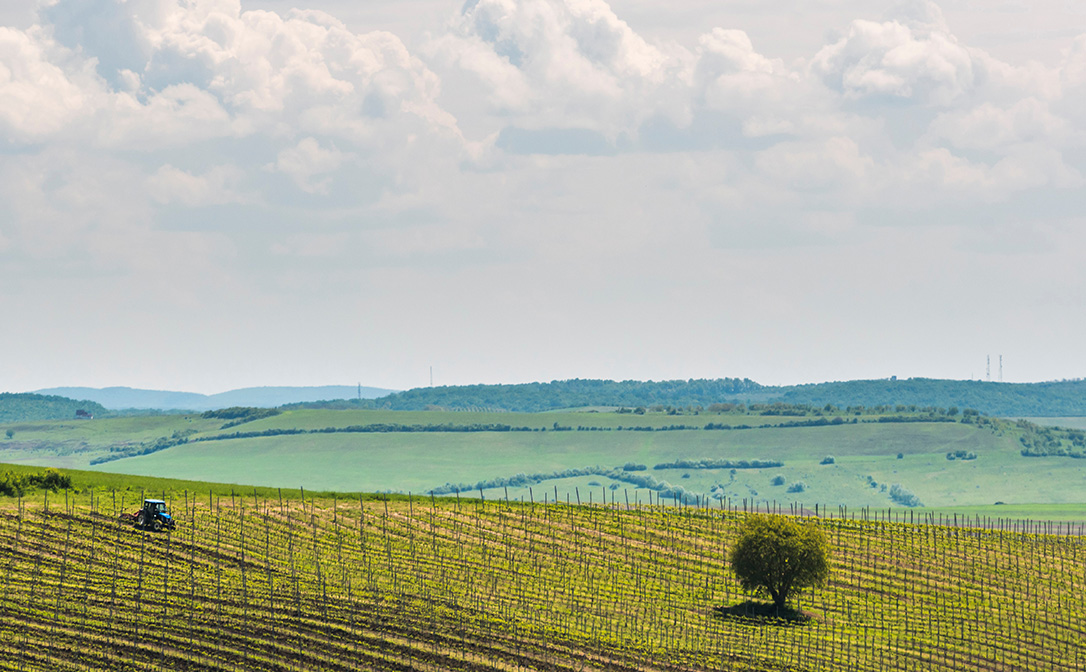
Vineyards in the Drăgăşani region
You may be seeing more wines from Romania on the shelves in your local stores. However, only 5-6% of Romanian wine is exported. Therefore, the local wine industry relies heavily on domestic consumption. The last few years have witnessed an increase in export volume and value. Countries such as Germany, the UK and the Netherlands make up the main export markets.
While there are a few hundred grape growers and wine producers in Romania, most production is accounted for by a few large producers, which include Cramele Recaş, Jidvei, Casa de Vinuri Cotnari, Domeniile Alexandrion Alexandrion Rhein 1892, Beciul Domnesc, Crama Ceptura.
Geography
The Romanian wine regions are situated between the 44 and 48° Northern latitude, in a moderate continental climate with hot summers (the average temperature in July is 23.5°C) and relatively harsh winters.
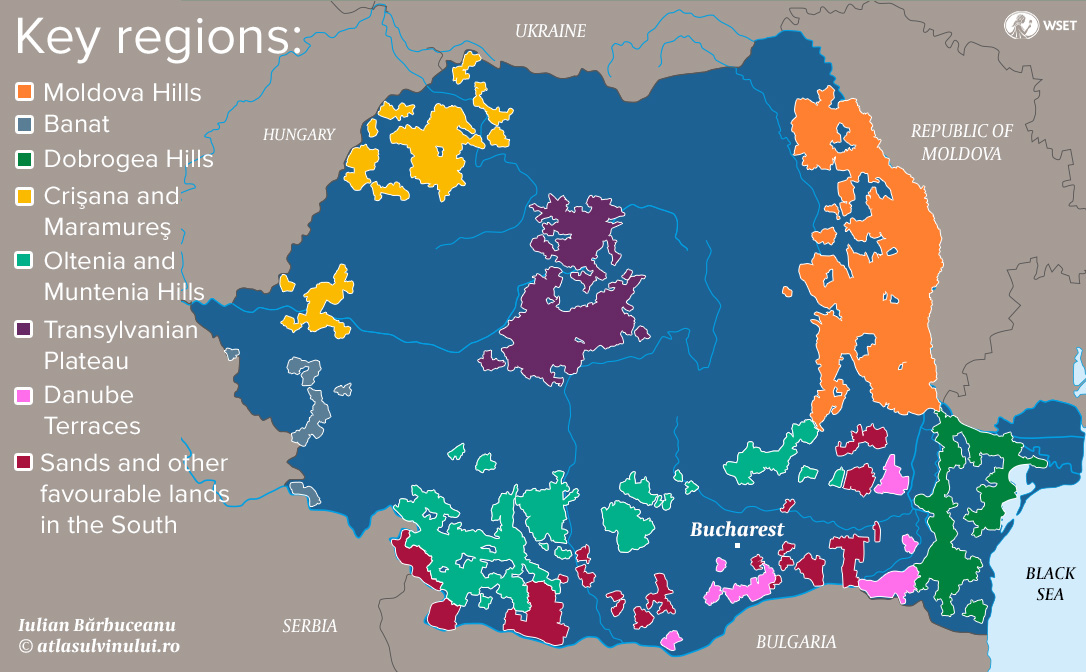
This map was developed by Iulian Barbuceanu, author of the Atlas of Romanian Wines
The Black Sea brings a moderating influence and the Carpathians (33% of the country’s land area) block the polar and Siberian air masses coming from the North/ North-East, however, temperatures of -20°C can still occur at least once every 10 years. With a relatively low average annual rainfall of 540 mm, drought can occur during the summer.
Romania has three distinct zones: the intra-Carpathian plateau; the Carpathian foothills; and the Pontic-Danubian area. These are divided into 8 growing regions, 33 PDOs registered + one applied, yet not registered (Jidvei) and 12 PGIs.
Grape growing in Romania
There is a range of international and indigenous varieties currently grown in Romania.
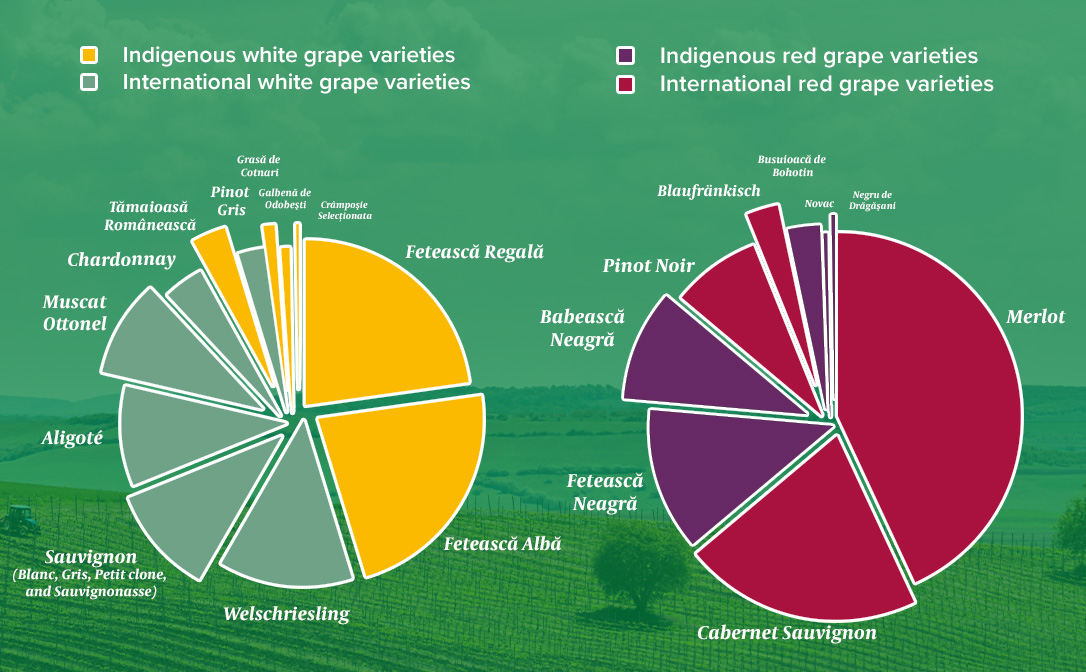
OIV 2022, latest data on most planted varieties in Romania
What does the future hold for Romanian wine?
Due to exports making such a small proportion of total production, many international consumers are unfamiliar with Romanian wine.
Despite a reluctance to invest in shared endeavours, due to the negative perceptions caused by collectivization under Communist rule, some Romanian producers in DOCs such as Dealu Mare and Drăgăşani have formed vintners’ associations to collectively promote their wines in international markets.
In addition, Romania is yet to find a flagship variety, a national brand, or an iconic wine, region or producer to lead its presence on the international market. Whilst some wineries believe that there is a lot of potential in local varieties such as Fetească Regală, (the most planted variety in the country) and Fetească neagră, other wineries are beginning to excel in using international varieties. In addition, each region of Romania is starting to compile its own catalogue of local grape varieties based on the traditional assortment in each zone, most of which were lost after phylloxera.
Many readers will undoubtedly be unfamiliar with Romania, not just as a wine producer but also as a country. However, its history, numerous indigenous grape varieties and an array of regions give it a real sense of place and personality.
This article was written by Julia Scavo DipWSET and the maps were developed by Iulian Barbuceanu. Julia is currently working on publishing 'Wine Secrets of Romania' with Bruno Scavo and Elizabeth Gabay MW. Iulian Barbuceanu is the author of the "Atlas of the Romanian Wines / Atlasul Vinului Romanesc".
Related content:


